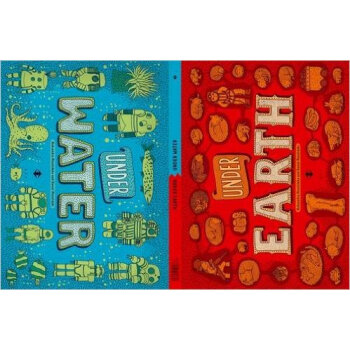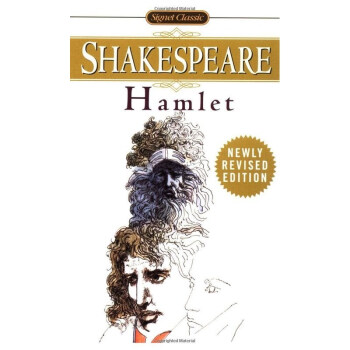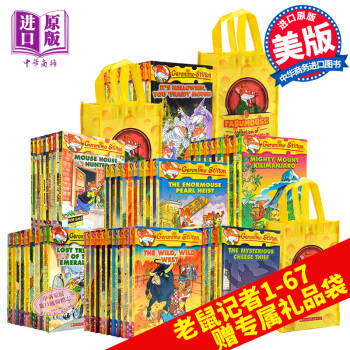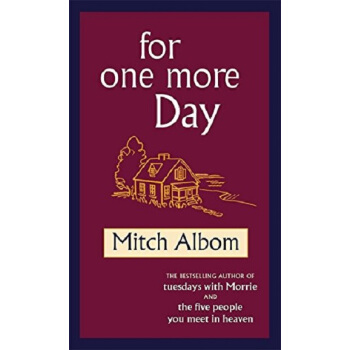![Babushka Baba Yaga 芭芭雅嘎奶奶 [平装] [4岁及以上]](https://pic.tinynews.org/19140873/3e801fab-cfeb-4ba2-9455-63175cf5394f.jpg)

具体描述
内容简介
Baba Yaga is a witch famous throughout Russia for eating children, but this Babushka Baba Yaga is a lonely old woman who just wants a grandchild—to love. "Kids will respond to the joyful story of the outsider who gets to join in, and Polacco's richly patterned paintings of Russian peasant life on the edge of the woods are full of light and color." — en's Book The villagers are afraid of her, so the legendary Baba Yaga disguises herself as an old woman in order to know the joys of being a grandmother.作者简介
Patricia Polacco was born in Lansing, Michigan in 1944. Her parents divorced when she was three but both parents were very much a part of her childhood. She spent the summers with her father in Williamston, Michigan and the rest of the year with her mother and grandparents on a farm. Both families spent a great deal of time sharing stories and memories with Patricia and her older brother, Richard. When she was seven, the children moved with her mother to Oakland, California where she still lives, but they continued to go every summer to Michigan.She had great difficulty learning to read because of dyslexia, a condition about which very little was known at the time, but a seventh grade teacher discovered her problem and helped her with it. Once she could read, she read voraciously.
Patricia Polacco published her first book in 1987. She often plans out a story before she puts it down on paper and usually the words come before the illustrations.
精彩书评
Publishers Weekly Living alone in the forest, Baba Yaga watches longingly as the babushkas of the village care for their grandchildren. Snatching an outfit off a clothesline, the wizened, long-eared creature disguises herself as one of the village grandmothers and goes in search of a child to love. She finds the cherubic Victor, whose mother needs someone to watch him while she works. Baba Yaga savors her new life, until one day she overhears the other babushkas speaking hatefully of the legendary Baba Yaga. Greatly saddened, she decides to return to her home in the woods before Victor discovers her true identity. Polacco's soothing version of this Russian folktale ends happily: Baba Yaga saves her beloved charge from a pack of vicious wolves and earns the babushkas' praise and acceptance. The art features Polacco's ( Rechenka's Eggs ) trademark sumptuous colors, a rich melange of patterns and textures--and even a sprinkling of forest fairies. Such visual dimension, coupled with her direct yet resonant narrative, marks this as another of Polacco's winning picture books. Ages 4-8. (Sept.) Publishers Weekly This "direct yet resonant" retelling of a Russian folktale has "sumptuous colors, a rich melange of patterns and textures--and even a sprinkling of forest fairies," said PW. Ages 4-8. (Jan.) Fewer Reviews Children's Literature A delightful tale about a good Russian witch with a lesson about judging by appearance alone. Baba Yaga is not really a wicked witch, she just wants to be some little child's grandmother. Her chance comes when she saves a young boy from the wolves and the other grandmother's accept her as one of their own. Polacco's variant of this Russian folktale is beautifully illustrated. Widely reviewed and praised, this book earned a "star" from School Library Journal. Children's Literature In most Russian stories, Baba Yaga is a horrible witch who eats children, but not in Polacco's Babushka Baba Yaga. She wants to be a grandmother and hug and hold children. It is not just how Polacco changes the character. She also tells a really great story when she adds real human feelings to Baba Yaga. Kids will love the twist and they will love saying "Babushka Baba Yaga" over and over. School Library Journal K-Gr 3-Wishing to be like the people she watches from the woods, Baba Yaga dresses herself in human clothing and covers her elfin ears with a scarf. Resembling any other grandmother or babushka, she is welcomed into the home of a young mother and quickly assumes the care of a child named Victor. She grows to love the boy, but when the other old women tell terrifying stories of the witch Baba Yaga, she returns to the woods with a heavy heart. Missing her, Victor wanders into the woods and is threatened by ferocious wolves. Coming to his rescue, Baba Yaga is finally accepted by the babushkas who realize that, ``Those who judge one another on what they hear or see, and not what they know of them in their hearts, are fools indeed!'' Polacco's reassuring text is accompanied by her full-page illustrations drawn in a casual, relaxed style in a variety of mediums: markers, charcoal pencil, chalk pastel, and gouache. The underlying message of tolerance is well presented, and the author does an admirable job of melding the two contrasting grandmother images from Russian culture. While her depiction of the misunderstood creature may surprise serious students of folklore, those wanting to share a kinder, gentler Baba Yaga will welcome this picture book.-Denise Anton Wright, Illinois State University, Normal前言/序言
用户评价
这本书真是太棒了,简直是为我们家那个活泼好动的五岁小家伙量身定做的!从我们打开包裹的那一刻起,她就被封面那鲜艳的色彩和神秘的插画深深吸引住了。首先要说的是,装帧质量非常扎实,即便是小手经常不经意间拉扯,书页也没有丝毫卷边或松动的迹象,这对于经常“暴力翻阅”的孩子来说简直是福音。我们家很少有书能逃过她“深度研究”的检验而不留痕迹的。内容上,虽然我不能具体描述情节,但可以肯定地说,它成功地捕捉到了一个非常吸引学龄前儿童的叙事节奏。故事的铺陈既不会过于拖沓,让耐性有限的孩子感到无聊,也不会因为节奏过快而让人抓不住重点。每一次阅读时间,都变成了一场充满期待的旅程,她会主动要求我用不同的声调来演绎书中的角色,特别是那些听起来带着异域风情的词汇,每次都能逗得她咯咯大笑。更让我惊喜的是,这本书的插图风格非常独特,它既有童话故事的梦幻感,又带着一种恰到好处的、不至于吓到小朋友的奇特魅力。光影的处理和人物的表情都极其到位,让那些原本可能有些抽象的概念变得生动具体。看完之后,她经常会拿着书跑到角落里自己“解读”图画,那种沉浸式的体验,远超出了单纯的文字阅读。这套书绝对是睡前故事的黄金选择,每次都能让她在甜甜的梦乡中结束一天的喧闹。
评分我最近入手了好几本针对学龄前儿童的绘本,但这一本无疑是让我印象最深刻的,尤其是在主题的深度和艺术表现力上。我得说,这本书在处理“熟悉与陌生”、“传统与现代”这种复杂概念的平衡上做得非常巧妙。它不是那种千篇一律的甜腻童话,而是带有一种久经沉淀的、充满智慧的民间故事的韵味。我个人非常欣赏创作者在文字选择上的克制与精准,每一个词语的堆砌都像是经过精心打磨的宝石,既保证了语言的韵律美,又不会因为过于复杂的词汇而让四岁多的孩子感到困惑。我注意到,当我朗读到某些描述场景的段落时,我需要稍微停顿一下,因为我的孩子会主动伸出手去触摸书页上的插画,仿佛想要穿过纸面去感受那个世界的氛围。这说明书中的视觉语言与文字叙述达到了高度的共鸣。这本书的装帧设计也体现了对儿童用书的深思熟虑,纸张的厚度和触感都非常舒服,边缘处理得圆润无虞,大开本的设计让孩子在阅读时拥有更广阔的视觉空间去捕捉细节。从教育学的角度来看,它成功地激发了孩子对文化多样性的初步好奇心,让她开始询问关于“不一样”的家庭和生活方式的问题,这正是我们希望通过阅读培养的开放心态。
评分自从我们开始阅读这本绘本以来,我发现家里关于“想象力”的讨论频率显著增加了。这不是一本读完就束之高阁的书,它具有很强的“后劲”。每次读完,我们都会花很长时间讨论书里的细节。比如,那些充满想象力的工具、那些奇特的交通方式(如果故事中有的话,此处代指一切非日常元素),都成了我们日常游戏和涂鸦的灵感源泉。我特别赞赏这本书在保持童趣的同时,所流露出的那种对传统故事内核的尊重和创新。它没有刻意迎合当下最流行的卡通风格,而是选择了一种更具艺术价值和永恒感的表达方式,这对于培养孩子初级的审美鉴赏能力是非常有益的。纸张的选择也值得称赞,它有一种温暖的、略带粗粝感的质地,摸起来比那些光面纸更让人感到踏实和亲切,非常适合孩子反复触摸和把玩。对于四岁以上的孩子来说,这本书提供的刺激点非常丰富,它既满足了他们对新奇事物的好奇心,又在潜移默化中教会了他们一些关于坚持和智慧的道理。
评分作为一位对童书选择颇为挑剔的家长,我必须承认,这本书的整体制作水平达到了我心目中“优秀”的标准之上。它的成功之处在于,它能够同时取悦“大人”和“孩子”两个群体。孩子享受的是那种充满活力和意外的冒险感,而大人则能从文字的精妙、插画的层次感以及其中蕴含的文化底蕴中获得共鸣。在色彩运用上,这本书非常大胆和成熟,它不像很多低幼读物那样只使用纯色块,而是巧妙地运用了饱和度变化的色调,营造出一种既梦幻又接地气的氛围。这种视觉上的深度,确保了即便是多次阅读,大人也不会感到审美疲劳。更重要的是,这本书在传递情感方面极其到位,它成功地描绘出了一种复杂的情感联系——那种既有距离感又充满关怀的复杂人际关系(此处指书中核心人物之间的互动模式)。这种对情感细微差别的捕捉,对于帮助孩子建立更复杂的情感认知是非常重要的。强烈推荐给那些希望给孩子提供更高质量阅读体验的家庭。
评分说实话,我原本对“奶奶”主题的故事有点审美疲劳了,总觉得不出门就是热乎乎的饼干和毛毯。但这一本完全打破了我的固有印象!它带来的感觉更像是一场充满冒险和惊喜的森林之旅,那种略带神秘感的氛围让人欲罢不能。我们家这个小家伙,她对那些需要动脑筋去理解的情节特别有兴趣,而这本书恰好提供了这样的机会。阅读过程中,我们经常会进行“预测”游戏,比如“你猜接下来会发生什么?”或者“她为什么会那样做?”。这本书的叙事结构非常适合这种互动式的阅读体验,因为它巧妙地设置了多个可以引发讨论的小悬念。让我印象深刻的是,即便是相对复杂的场景描述,插画家也找到了最直观、最富表现力的视觉语言去呈现,使得孩子能够毫不费力地跟上故事的脉络。而且,这本书的重复性设计非常高明,有些关键的短语或画面元素会反复出现,这对于初级阅读者巩固记忆、增强自信心非常有帮助。她现在已经能抢着念出那些重复出现的句子了,虽然发音还不完全标准,但那种成就感是无法用语言衡量的。
评分真好,真快,服务也好,我已经是京东的老会员了,在这里买东西真的很方便,全都是正品,有质量保障。我给自己、给家里、给公司、给父母、给朋友…………总之都是在京东。在这里买发货快,服务好,可退、可换,没有后顾之忧。我也把自己的朋友、同事介绍过来。现在我都是京东的超级会员了,呵呵,连邮费都没有了。太棒了!家里的冰箱、电视、电饭锅、数码相机、电脑、手机、平板全是在京东买的。以前也总是评价的,呵呵,评价有积分送,还能兑礼卷。很划算。现在京东的评价积分规则改了,刚开始不知道,哇评了一大堆,很不爽,白忙了,给京东做义务劳动了。呵呵,商人都是这样。没办法,也是京东的超级会员了,就当做奉献了。要500字的好评换积分,还确实有点麻烦,还好我的订单多,给京东拉下人气,也希望京东看在我努力的份上,多给我点积分,才好。呵呵,这里的书,和同事、同事孩子的、还有儿子同学们用的书,都是我们帮买的。他们高兴的很。又方便 ,又便宜。质量又好,还能帮我赚积分,帮我会员升级。我也就很高兴帮他们。要是京东能针对我们老顾客也多搞些活动,那有多好啊。呵呵,我是京东义务宣传员,不信的可以来体验下。在这里买东西,比在淘宝踏实多了。网络购物新体验,就来京东。真好,真快,服务也好,我已经是京东的老会员了,在这里买东西真的很方便,全都是正品,有质量保障。我给自己、给家里、给公司、给父母、给朋友…………总之都是在京东。在这里买发货快,服务好,可退、可换,没有后顾之忧。我也把自己的朋友、同事介绍过来。现在我都是京东的超级会员了,呵呵,连邮费都没有了。太棒了!家里的冰箱、电视、电饭锅、数码相机、电脑、手机、平板全是在京东买的。以前也总是评价的,呵呵,评价有积分送,还能兑礼卷。很划算。现在京东的评价积分规则改了,刚开始不知道,哇评了一大堆,很不爽,白忙了,给京东做义务劳动了。呵呵,商人都是这样。没办法,也是京东的超级会员了,就当做奉献了。要500字的好评换积分,还确实有点麻烦,还好我的订单多,给京东拉下人气,也希望京东看在我努力的份上,多给我点积分,才好。呵呵,这里的书,和同事、同事孩子的、还有儿子同学们用的书,都是我们帮买的。他们高兴的很。又方便 ,又便宜。质量又好,还能帮我赚积分,帮我会员升级。我也就很高兴帮他们。要是京东能针对我们老顾客也多搞些活动,那有多好啊。呵呵,我是京东义务宣传员,不信的可以来体验下。在这里买东西,比在淘宝踏实多了。网络购物新体验,就来京东。
评分经典不用多说
评分波拉寇很擅长说故事,故事大多有深刻意义,看到总忍不住多拿几本她的书,都很喜欢。但是大多难度都比较高,适合小学中高年级孩子阅读。据发现早慧的孩子都有一个共同的特点,就是喜欢阅读,古今中外,也有不少因为儿时喜欢阅读而最终走上成功道路的名人。对于孩子来说,阅读不仅仅是一种从阅读内容中获取有用信息的一种方式,而且还是构成他们日常生活的一项重要内容,是促进孩子的人性健康发展的有益方式。孩子在阅读对象的潜移默化之下会慢慢的形成良好的道德感、审美感和意志力。换句话说,阅读对于孩子的情商发展是十分有利的。我们都知道,情商对于一个正在成长的孩子来说,有的时候甚至会比智商更加重要。一个智商高的孩子,如果没有坚强、乐观的性格以及正确的人生观和世界观的辅助的话,是很难真正获得成功的。而这些品格都是应该从小培养的。目前很多家庭也越来越重视幼儿阅读能力的培养,但也要注意方式方法。兴趣是最好的老师,在培养幼儿阅读能力中也是如此,想让孩子爱上阅读,首先要培养孩子的阅读兴趣。1、选择孩子感兴趣的图书;2、父母自己必须喜欢读书;3、让幼儿在游戏中阅读;4、将故事表演出来。可见,阅读是帮助孩子情商发展的一种有效的方式,是引导孩子健康成长的一种重要的方法。优秀的阅读作品会对孩子的情商发展产生不可预计的作用,它们往往具有很强的道德感染力,有一种洗涤心灵、催人向上的力量。
评分真好,真快,服务也好,我已经是京东的老会员了,在这里买东西真的很方便,全都是正品,有质量保障。我给自己、给家里、给公司、给父母、给朋友…………总之都是在京东。在这里买发货快,服务好,可退、可换,没有后顾之忧。我也把自己的朋友、同事介绍过来。现在我都是京东的超级会员了,呵呵,连邮费都没有了。太棒了!家里的冰箱、电视、电饭锅、数码相机、电脑、手机、平板全是在京东买的。以前也总是评价的,呵呵,评价有积分送,还能兑礼卷。很划算。现在京东的评价积分规则改了,刚开始不知道,哇评了一大堆,很不爽,白忙了,给京东做义务劳动了。呵呵,商人都是这样。没办法,也是京东的超级会员了,就当做奉献了。要500字的好评换积分,还确实有点麻烦,还好我的订单多,给京东拉下人气,也希望京东看在我努力的份上,多给我点积分,才好。呵呵,这里的书,和同事、同事孩子的、还有儿子同学们用的书,都是我们帮买的。他们高兴的很。又方便 ,又便宜。质量又好,还能帮我赚积分,帮我会员升级。我也就很高兴帮他们。要是京东能针对我们老顾客也多搞些活动,那有多好啊。呵呵,我是京东义务宣传员,不信的可以来体验下。在这里买东西,比在淘宝踏实多了。网络购物新体验,就来京东。真好,真快,服务也好,我已经是京东的老会员了,在这里买东西真的很方便,全都是正品,有质量保障。我给自己、给家里、给公司、给父母、给朋友…………总之都是在京东。在这里买发货快,服务好,可退、可换,没有后顾之忧。我也把自己的朋友、同事介绍过来。现在我都是京东的超级会员了,呵呵,连邮费都没有了。太棒了!家里的冰箱、电视、电饭锅、数码相机、电脑、手机、平板全是在京东买的。以前也总是评价的,呵呵,评价有积分送,还能兑礼卷。很划算。现在京东的评价积分规则改了,刚开始不知道,哇评了一大堆,很不爽,白忙了,给京东做义务劳动了。呵呵,商人都是这样。没办法,也是京东的超级会员了,就当做奉献了。要500字的好评换积分,还确实有点麻烦,还好我的订单多,给京东拉下人气,也希望京东看在我努力的份上,多给我点积分,才好。呵呵,这里的书,和同事、同事孩子的、还有儿子同学们用的书,都是我们帮买的。他们高兴的很。又方便 ,又便宜。质量又好,还能帮我赚积分,帮我会员升级。我也就很高兴帮他们。要是京东能针对我们老顾客也多搞些活动,那有多好啊。呵呵,我是京东义务宣传员,不信的可以来体验下。在这里买东西,比在淘宝踏实多了。网络购物新体验,就来京东。
评分真好,真快,服务也好,我已经是京东的老会员了,在这里买东西真的很方便,全都是正品,有质量保障。我给自己、给家里、给公司、给父母、给朋友…………总之都是在京东。在这里买发货快,服务好,可退、可换,没有后顾之忧。我也把自己的朋友、同事介绍过来。现在我都是京东的超级会员了,呵呵,连邮费都没有了。太棒了!家里的冰箱、电视、电饭锅、数码相机、电脑、手机、平板全是在京东买的。以前也总是评价的,呵呵,评价有积分送,还能兑礼卷。很划算。现在京东的评价积分规则改了,刚开始不知道,哇评了一大堆,很不爽,白忙了,给京东做义务劳动了。呵呵,商人都是这样。没办法,也是京东的超级会员了,就当做奉献了。要500字的好评换积分,还确实有点麻烦,还好我的订单多,给京东拉下人气,也希望京东看在我努力的份上,多给我点积分,才好。呵呵,这里的书,和同事、同事孩子的、还有儿子同学们用的书,都是我们帮买的。他们高兴的很。又方便 ,又便宜。质量又好,还能帮我赚积分,帮我会员升级。我也就很高兴帮他们。要是京东能针对我们老顾客也多搞些活动,那有多好啊。呵呵,我是京东义务宣传员,不信的可以来体验下。在这里买东西,比在淘宝踏实多了。网络购物新体验,就来京东。真好,真快,服务也好,我已经是京东的老会员了,在这里买东西真的很方便,全都是正品,有质量保障。我给自己、给家里、给公司、给父母、给朋友…………总之都是在京东。在这里买发货快,服务好,可退、可换,没有后顾之忧。我也把自己的朋友、同事介绍过来。现在我都是京东的超级会员了,呵呵,连邮费都没有了。太棒了!家里的冰箱、电视、电饭锅、数码相机、电脑、手机、平板全是在京东买的。以前也总是评价的,呵呵,评价有积分送,还能兑礼卷。很划算。现在京东的评价积分规则改了,刚开始不知道,哇评了一大堆,很不爽,白忙了,给京东做义务劳动了。呵呵,商人都是这样。没办法,也是京东的超级会员了,就当做奉献了。要500字的好评换积分,还确实有点麻烦,还好我的订单多,给京东拉下人气,也希望京东看在我努力的份上,多给我点积分,才好。呵呵,这里的书,和同事、同事孩子的、还有儿子同学们用的书,都是我们帮买的。他们高兴的很。又方便 ,又便宜。质量又好,还能帮我赚积分,帮我会员升级。我也就很高兴帮他们。要是京东能针对我们老顾客也多搞些活动,那有多好啊。呵呵,我是京东义务宣传员,不信的可以来体验下。在这里买东西,比在淘宝踏实多了。网络购物新体验,就来京东。
评分真好,真快,服务也好,我已经是京东的老会员了,在这里买东西真的很方便,全都是正品,有质量保障。我给自己、给家里、给公司、给父母、给朋友…………总之都是在京东。在这里买发货快,服务好,可退、可换,没有后顾之忧。我也把自己的朋友、同事介绍过来。现在我都是京东的超级会员了,呵呵,连邮费都没有了。太棒了!家里的冰箱、电视、电饭锅、数码相机、电脑、手机、平板全是在京东买的。以前也总是评价的,呵呵,评价有积分送,还能兑礼卷。很划算。现在京东的评价积分规则改了,刚开始不知道,哇评了一大堆,很不爽,白忙了,给京东做义务劳动了。呵呵,商人都是这样。没办法,也是京东的超级会员了,就当做奉献了。要500字的好评换积分,还确实有点麻烦,还好我的订单多,给京东拉下人气,也希望京东看在我努力的份上,多给我点积分,才好。呵呵,这里的书,和同事、同事孩子的、还有儿子同学们用的书,都是我们帮买的。他们高兴的很。又方便 ,又便宜。质量又好,还能帮我赚积分,帮我会员升级。我也就很高兴帮他们。要是京东能针对我们老顾客也多搞些活动,那有多好啊。呵呵,我是京东义务宣传员,不信的可以来体验下。在这里买东西,比在淘宝踏实多了。网络购物新体验,就来京东。真好,真快,服务也好,我已经是京东的老会员了,在这里买东西真的很方便,全都是正品,有质量保障。我给自己、给家里、给公司、给父母、给朋友…………总之都是在京东。在这里买发货快,服务好,可退、可换,没有后顾之忧。我也把自己的朋友、同事介绍过来。现在我都是京东的超级会员了,呵呵,连邮费都没有了。太棒了!家里的冰箱、电视、电饭锅、数码相机、电脑、手机、平板全是在京东买的。以前也总是评价的,呵呵,评价有积分送,还能兑礼卷。很划算。现在京东的评价积分规则改了,刚开始不知道,哇评了一大堆,很不爽,白忙了,给京东做义务劳动了。呵呵,商人都是这样。没办法,也是京东的超级会员了,就当做奉献了。要500字的好评换积分,还确实有点麻烦,还好我的订单多,给京东拉下人气,也希望京东看在我努力的份上,多给我点积分,才好。呵呵,这里的书,和同事、同事孩子的、还有儿子同学们用的书,都是我们帮买的。他们高兴的很。又方便 ,又便宜。质量又好,还能帮我赚积分,帮我会员升级。我也就很高兴帮他们。要是京东能针对我们老顾客也多搞些活动,那有多好啊。呵呵,我是京东义务宣传员,不信的可以来体验下。在这里买东西,比在淘宝踏实多了。网络购物新体验,就来京东。
评分很好的绘本
评分波拉寇很擅长说故事,故事大多有深刻意义,看到总忍不住多拿几本她的书,都很喜欢。但是大多难度都比较高,适合小学中高年级孩子阅读。据发现早慧的孩子都有一个共同的特点,就是喜欢阅读,古今中外,也有不少因为儿时喜欢阅读而最终走上成功道路的名人。对于孩子来说,阅读不仅仅是一种从阅读内容中获取有用信息的一种方式,而且还是构成他们日常生活的一项重要内容,是促进孩子的人性健康发展的有益方式。孩子在阅读对象的潜移默化之下会慢慢的形成良好的道德感、审美感和意志力。换句话说,阅读对于孩子的情商发展是十分有利的。我们都知道,情商对于一个正在成长的孩子来说,有的时候甚至会比智商更加重要。一个智商高的孩子,如果没有坚强、乐观的性格以及正确的人生观和世界观的辅助的话,是很难真正获得成功的。而这些品格都是应该从小培养的。目前很多家庭也越来越重视幼儿阅读能力的培养,但也要注意方式方法。兴趣是最好的老师,在培养幼儿阅读能力中也是如此,想让孩子爱上阅读,首先要培养孩子的阅读兴趣。1、选择孩子感兴趣的图书;2、父母自己必须喜欢读书;3、让幼儿在游戏中阅读;4、将故事表演出来。可见,阅读是帮助孩子情商发展的一种有效的方式,是引导孩子健康成长的一种重要的方法。优秀的阅读作品会对孩子的情商发展产生不可预计的作用,它们往往具有很强的道德感染力,有一种洗涤心灵、催人向上的力量。
评分很好的绘本
相关图书
本站所有内容均为互联网搜索引擎提供的公开搜索信息,本站不存储任何数据与内容,任何内容与数据均与本站无关,如有需要请联系相关搜索引擎包括但不限于百度,google,bing,sogou 等
© 2025 book.tinynews.org All Rights Reserved. 静思书屋 版权所有

![Sherlock: The Sign of Four福尔摩斯:四个签名 [平装] pdf epub mobi 电子书 下载](https://pic.tinynews.org/19264371/rBEHZlAtqdcIAAAAAAAwat0_ChcAAACEwB7teYAADCC733.jpg)
![Revolutionary Road (Vintage Classics) [平装] pdf epub mobi 电子书 下载](https://pic.tinynews.org/19265073/rBEHaFA0RLcIAAAAAAA6hqodKy4AAAFzAOCviUAADqe371.jpg)
![Mythology: The DC Comics Art of Alex Ross [平装] pdf epub mobi 电子书 下载](https://pic.tinynews.org/19330618/rBEhWVJbmRgIAAAAAACL9a0gfuEAAEHkgF9AOUAAIwN964.jpg)
![Options, Futures and Other Derivatives期权、期货与其他衍生品全球版 英文原版 [平装] pdf epub mobi 电子书 下载](https://pic.tinynews.org/19456436/rBEhWFKdsgIIAAAAAAGCG66eT5AAAGR6AGhRtgAAYIz693.jpg)
![Lonely Planet: Discover USA (Travel Guide) 孤独星球旅行指南:发现美国 [平装] pdf epub mobi 电子书 下载](https://pic.tinynews.org/19477650/5397cb62Nc067b5dd.jpg)
![The Presentation of Self in Everyday Life 英文原版 [平装] pdf epub mobi 电子书 下载](https://pic.tinynews.org/19484421/5469d51fNe98ac2cc.jpg)
![Monster Manual 英文原版 [精装] pdf epub mobi 电子书 下载](https://pic.tinynews.org/19507655/5469864bN83a1116e.jpg)
![13 Things Mentally Strong People Don't Do Take [平装] pdf epub mobi 电子书 下载](https://pic.tinynews.org/19532568/54dbfe58Nd9e5408b.jpg)
![DK Adventures: Dinosaur Hunters [平装] [8-12岁] pdf epub mobi 电子书 下载](https://pic.tinynews.org/19537616/5523b660Nf92bfcc9.jpg)
![The Invention of Nature Alexander von Humboldt' [精装] pdf epub mobi 电子书 下载](https://pic.tinynews.org/19551123/56efb6e4N8547f774.jpg)
![Evicted 英文原版 [精装] pdf epub mobi 电子书 下载](https://pic.tinynews.org/19616766/575fbeedN27a9611d.jpg)
![Batman and Robin Eternal Vol. 1 [平装] pdf epub mobi 电子书 下载](https://pic.tinynews.org/19634841/57833290N1a90f5f9.jpg)







